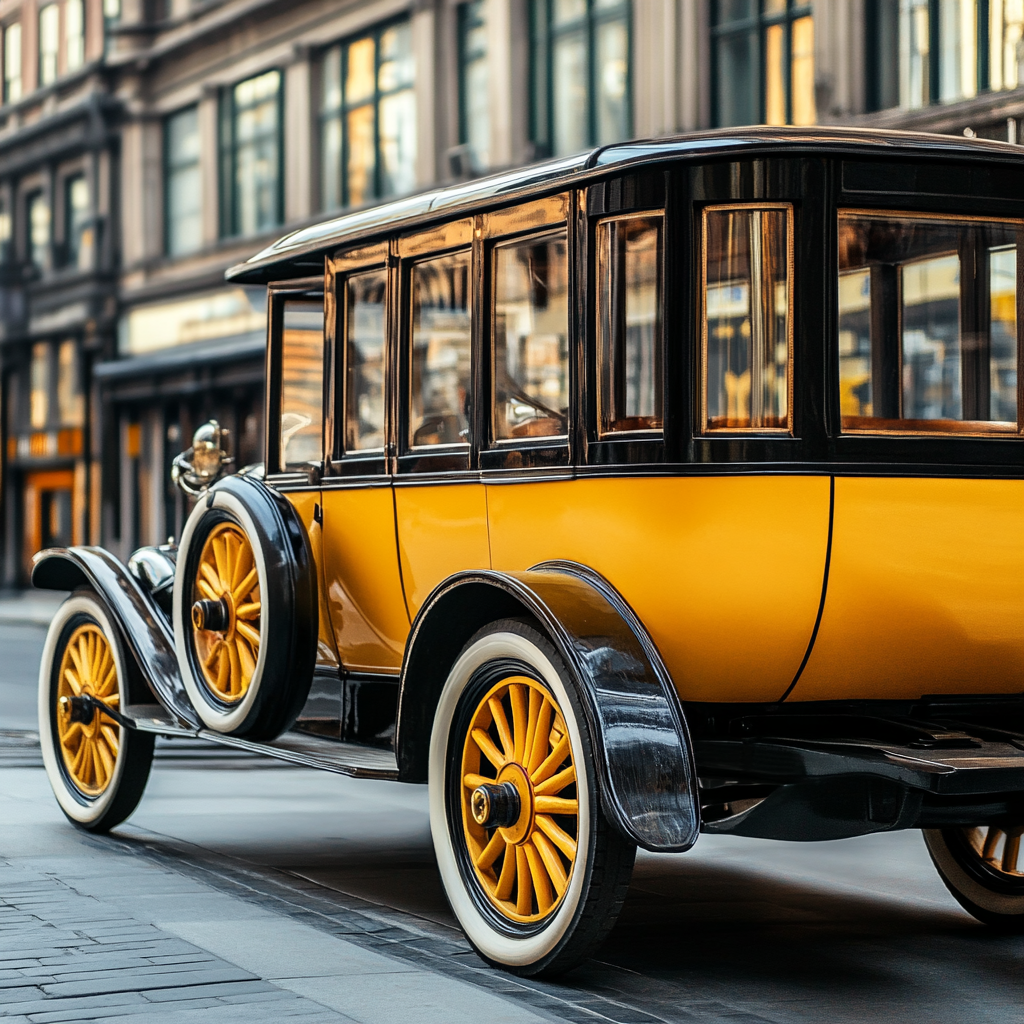Machines of past generations are not just iron and engines, they are repositories of memory and reflections of entire eras, their culture, lifestyle and technologies.Preserving the images and forms of past years, we can understand how the idea of comfort, speed and design changed, which is important not only for historians of technology, but also for everyone who appreciates the beauty and meaning of things. These cars have a specialaura of time— they remind us of the past, when technology was still a living art, when behind every element there was not only an engineering calculation, but also a desire to make life more beautiful.
Design features that defined an era
Cars of past years stand out for their special style, which is in many ways different from modern cars.Their forms reflect the artistic and cultural currents of the time,be it the graceful contours of the body, chrome details or expressive radiator grilles. Particular attention was paid not only to the exterior, but also to the interior – the materials and trim of the salons created a feeling of luxury and comfort. These design solutionsconveyed the character of the era, be it art deco, classical minimalism or progressive modernism.
Every detail was thought out with aesthetics and functionality in mind, making these vehicles not just transport, but true works of art.It is in the design of past generations that we can see the connection with the traditions of craftsmanship and the beginning of mass production,where standardization and unification had not yet dominated. As a result, the cars became unique, memorable and had their own soul, which still delights collectors and retro lovers.
Technologies of yesterday
Technical solutions, used in cars of the past, although they seem archaic today, reflectthe level of engineering thought of its time.They laid the foundations that later became the basis for modern systems and designs. These cars used mechanical carburetors, drum brakes, spring suspensions and simple cooling systems, but every detail was carefully fine-tuned by engineers striving for reliability and convenience.
Important technical features of retro cars include:
- Manual engine start (twist starter)
- Manual gearboxes with uneven shifting
- Carburetor fuel systems instead of injection systems
- Hydraulic braking systems in their infancy
- Suspensions with leaf springs and springs
Each of these elements was a reflection of the technology and knowledge of the era, and even though they were simple, they were innovative at the time.Studying these technical features provides insight into the evolution of engineering.and admire the work of those who created the first cars.
Legends on the Road
Many cars from bygone eras have acquired the status of true legends due to their unique characteristics and role in history. They became symbols of certain times, appeared in culture, cinema and mass consciousness. Models like the Ford Model T, Rolls-Royce Silver Ghost or Citroën DS are known not only to engineers, but also to the general public, having become icons of style and technical progress.
These cars are often associated with significant historical moments, landmark events and famous personalities, which makes them even more significant.Their stories are not just tales of technology, but also stories of people, society and cultural change,which gives them special value in the memory of generations.
Family Memories on Wheels
For many families, vintage cars are not just a collectible, but a real part of family history and nostalgia. Often, it is through such cars that memories of first trips, travels and shared moments of joy are passed on.These cars become the keepers of the warmth and spirit of generations,linking the past with the present.
Restoring and preserving family vintage cars is becoming a tradition that helps maintain a connection with family and history. Many people are familiar with stories about repairs in the garage, repairs and searches for rare parts, which further strengthens the emotional connection. Thus, these cars are not only a technical object, but also a symbol of family unity and history.
Revival and collecting
Modern movementThe preservation and restoration of vintage cars is growing worldwide. Collectors, clubs, museums and festivals bring together people who want to bring them back to life.unique examples of the past.It is a complex and labor-intensive process that requires knowledge, time and passion, but the results are worth the effort – the cars become the center of attention and admiration again.
Such revival helps to preserve historical memory, pass on knowledge to new generations and preserve cultural heritage.In addition, the restoration of vintage cars is an opportunity to touch history and be inspired by the creative approach of engineers and designers of the past.Thanks to such initiatives, the images of past generations continue to live and delight connoisseurs of beauty.
Cars of past generations are not just technology, they areliving memory, history and art,imprinted in metal and form. They help us understand how ideas about beauty, convenience and speed have changed, reflect eras and moods, and preserve personal and cultural memories. Thanks to them, we see the path of development of engineering and design, understand the connection between generations and are inspired by the legacy of the past.
Restoration and collecting of retro cars— is not just a hobby, but an important part of preserving cultural heritage. It is an opportunity to touch the eras where every detail had meaning, and every decision was thought out and inspired. In today’s world, full of technology and standardization, the machines of the past remind us of the value of uniqueness and individuality, they connect us with our roots and remind us that history is more than just dates and events.
Preserving and studying these examples helps us not to lose touch with the past, learn from the experience of our ancestors and be inspired by their creativity. In addition, this process unites people of different generations, creating communities with common interests and values. Cars of past generations are a real bridge between times, which we must protect and pass on.
Preserving vintage cars helps preserve historical memory and cultural heritage, and inspires creative and technical discoveries in future generations.
They showcase unique engineering solutions and aesthetic approaches of the past that can inspire modern designers and engineers to create innovative and stylish solutions.

